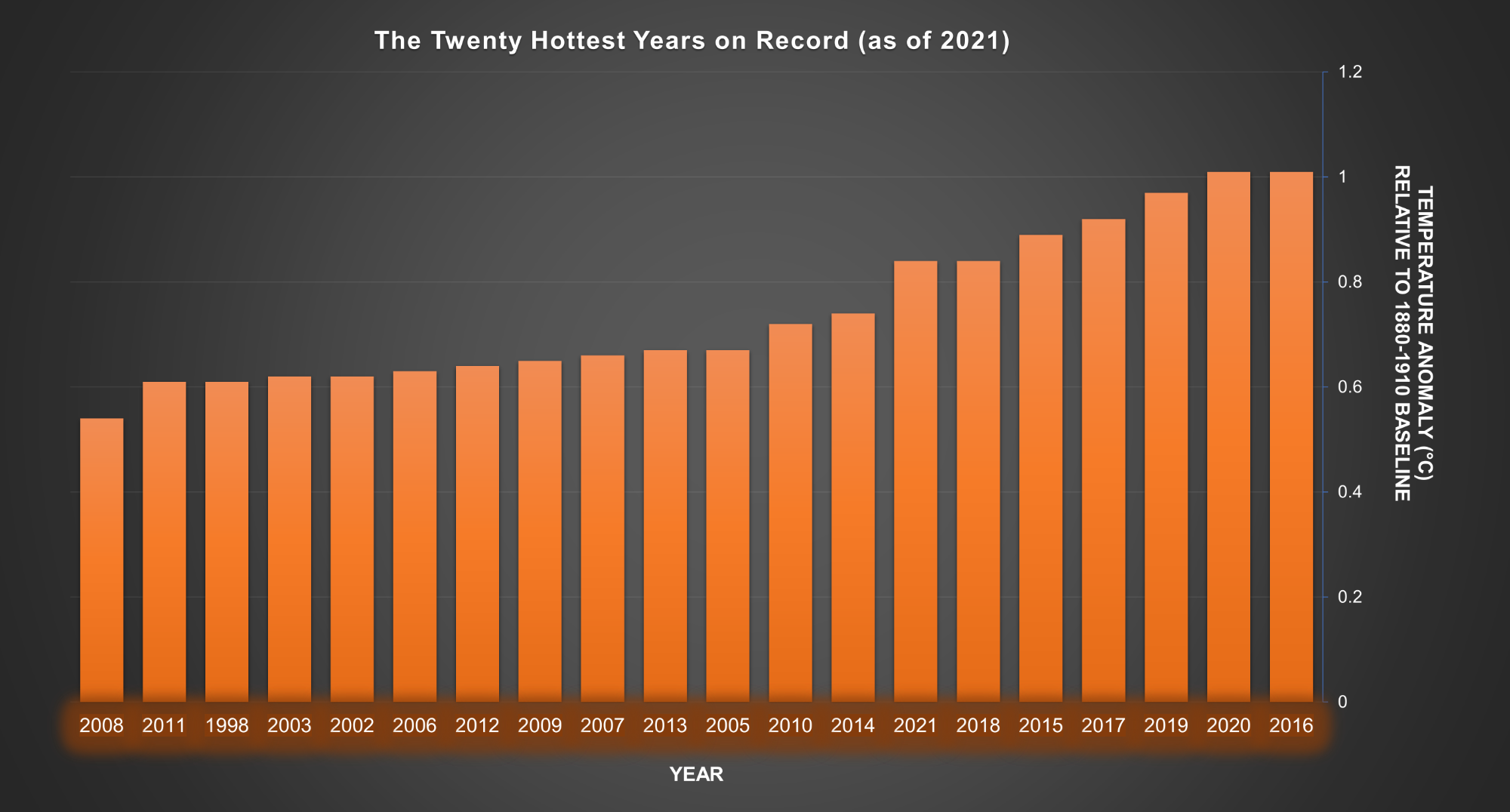Chapter Contents
- Why We Need to Adapt and Build Resilience
- The Costs and Benefits of Adaptation
- Types of Adaptation Strategies
- Adaptation to Different Climate Hazards
- Climate Justice and Equity
- Summary and Additional Resources
- Activities for Climate Change Adaptation Chapter
Image above of shaded playground in Stead Park, Washington, DC by BeyondDC via Flickr (CC BY-NC 2.0)

The twenty hottest years on record (global) as of 2021. All the record years but one (1998) are in the 21st century. Figure created by Ingrid Zabel for PRI's Earth@Home project (CC BY-NC-SA 4.0 license).
Most of the CO₂ that we emit will remain in the Earth's atmosphere—and continue to raise the Earth’s temperature—for hundreds of years, unless we invent and implement ways to draw it down dramatically. If we take rapid, ambitious action to reduce our greenhouse gas emissions and remove atmospheric carbon dioxide now, scientists have concluded that “the slowing down of global surface warming would be detectable after about twenty to thirty years.” [Intergovernmental Panel on Climate Change (IPCC), 2021] Sea level, however, is projected to continue to rise for hundreds of years because the ocean has absorbed over 90% of the excess heat in the atmosphere, and the ocean responds very slowly to this input of energy. Even if we succeed at dramatically reducing our greenhouse gas emissions, we will have to deal with the impacts of the CO₂ that we have already emitted. These impacts are often described as being “in the pipeline,” meaning that we are already committed to these changes and while we can’t stop them, we can adapt to them.

Resilience
Discussions of climate change adaptation often use the term “resilience” to describe a community’s adaptation goal. To be resilient is to be able to bounce back after a setback or disturbance. In the case of climate change, a resilient community has the following characteristics:
- It has made preparations for weather disasters so as to minimize their damage;
- It has recovery plans in place to repair damage and restore well-being as fast as possible;
- Community members have strong social connections so that people help each other;
- The community takes special care of its most vulnerable groups of people and ecosystems.
Ideally, a resilient community would not just bounce back to where it was after a disaster, but bounce forward to a stronger, more resilient community that is even better prepared for the next challenge.



